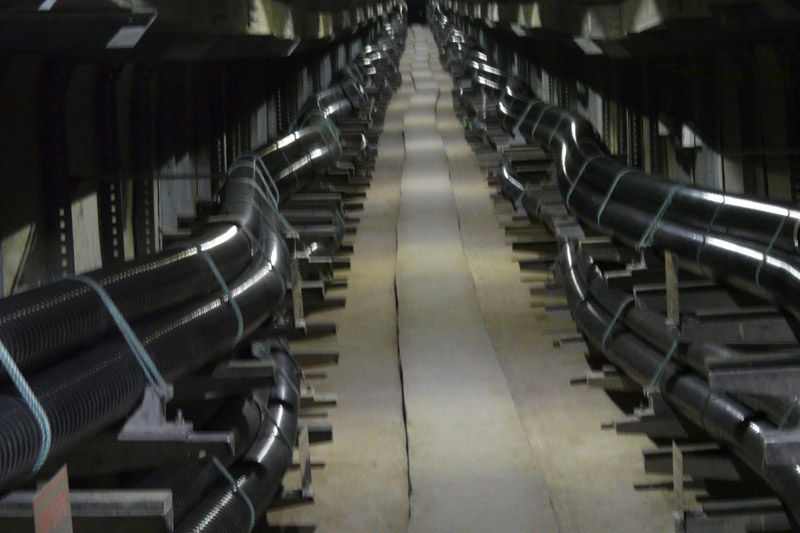Will the current carrying capacity of cables be reduced when a large number of cables are laid in groups?
- Categories:Company news
- Author:
- Origin:
- Time of issue:2020-01-02
- Views:11
(Summary description)When a large number of cables are laid in groups, the current carrying capacity of cables is reduced due to mutual heating. Sometimes, two or more parallel cables with smaller specifications should be considered to replace the cables with larger specifications
Will the current carrying capacity of cables be reduced when a large number of cables are laid in groups?
(Summary description)When a large number of cables are laid in groups, the current carrying capacity of cables is reduced due to mutual heating. Sometimes, two or more parallel cables with smaller specifications should be considered to replace the cables with larger specifications
- Categories:Company news
- Author:
- Origin:
- Time of issue:2020-01-02
- Views:11
When a large number of cables are laid in groups, the current carrying capacity of cables is reduced due to mutual heating. Sometimes, two or more parallel cables with smaller specifications should be considered to replace the cables with larger specifications, because the current carrying capacity per unit section of large section cables will be reduced due to skin effect and proximity effect. On the other hand, the decrease of the ratio of the surface area to the cross-sectional area of the large cross-section cable makes the heat dissipation capacity of the large cable poor. If multiple cables are used in parallel, the relative position of each cable should be considered to reduce the uneven distribution effect of cable ampacity.
For cables laid in underground pipelines, when using the load factor, the average heat loss heat capacity of the pipe group and its surrounding soil should be considered. The temperature of underground part changes with the change of average heat loss, so the higher short-term load factor is allowed to be the ratio of average load to peak load, which is usually measured based on the day and night average load. The peak load generally refers to the average value of the maximum load in 24 hours and 0.5-1 hour. For directly buried cables, the average surface temperature can be limited between 0 ℃ and 60 ℃ according to the soil conditions, so as to prevent the loss of soil moisture and thermal breakdown of cables.
When the cable is close to other loaded cables or heat sources, or when the ambient temperature exceeds the ambient temperature of the specified cable ampacity, the rated ampacity of the cable must be reduced. The normal ambient temperature of the cable installation refers to the temperature at which the cable is installed when the cable is not loaded. In order to properly determine the cable size required for a given load, this temperature should be thoroughly understood. For example, the ambient temperature of a cable laid separately from other cables in the air refers to the temperature before the cable is loaded. For cables in the air, it is also assumed that there is enough space around the cables to dissipate the heat generated by the cables, and it will not increase the temperature of the whole room. If the above correct conditions are specified, the following environmental conditions can be used to calculate the current carrying capacity of the cable.
Scan the QR code to read on your phone
Zhongxiang Photoelectric Technology Co., Ltd.
Service: +86-317-3362888 / 3362999 / 3318999
Mobile: +86-13333368669
Website: www.zxgdkj.cn
Address: Jinhua Road branch line, Renqiu Economic Development Zone, Hebei Province
Copyright © 2021 Zhongxiang Photoelectric Technology Co., Ltd. 冀ICP备********号




 +86-13333368669
+86-13333368669
 Messages
Messages
